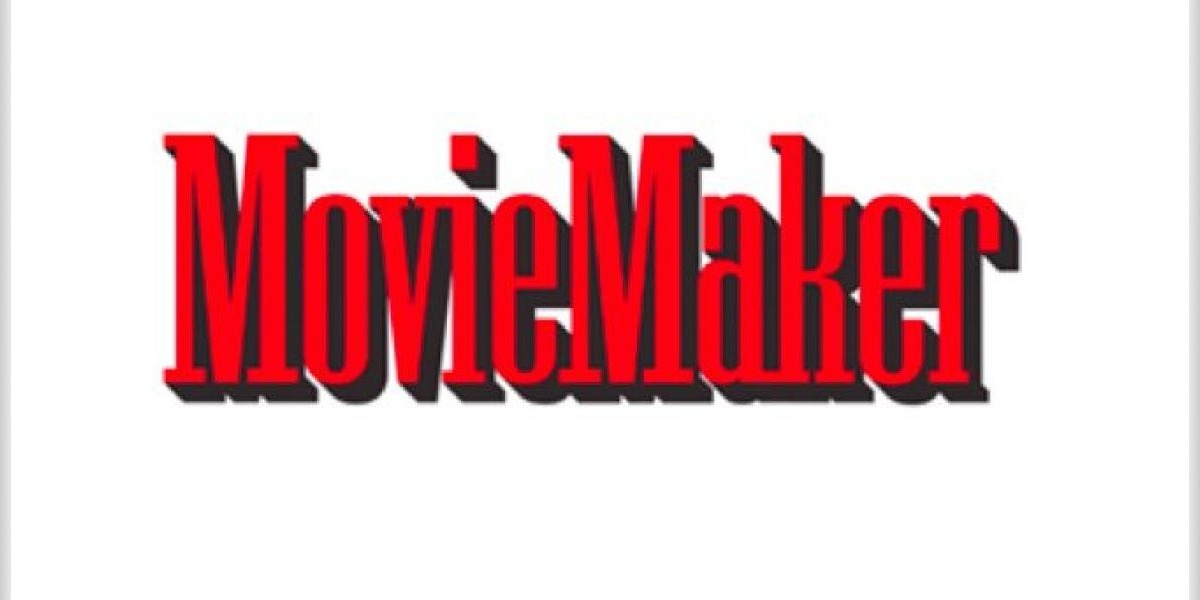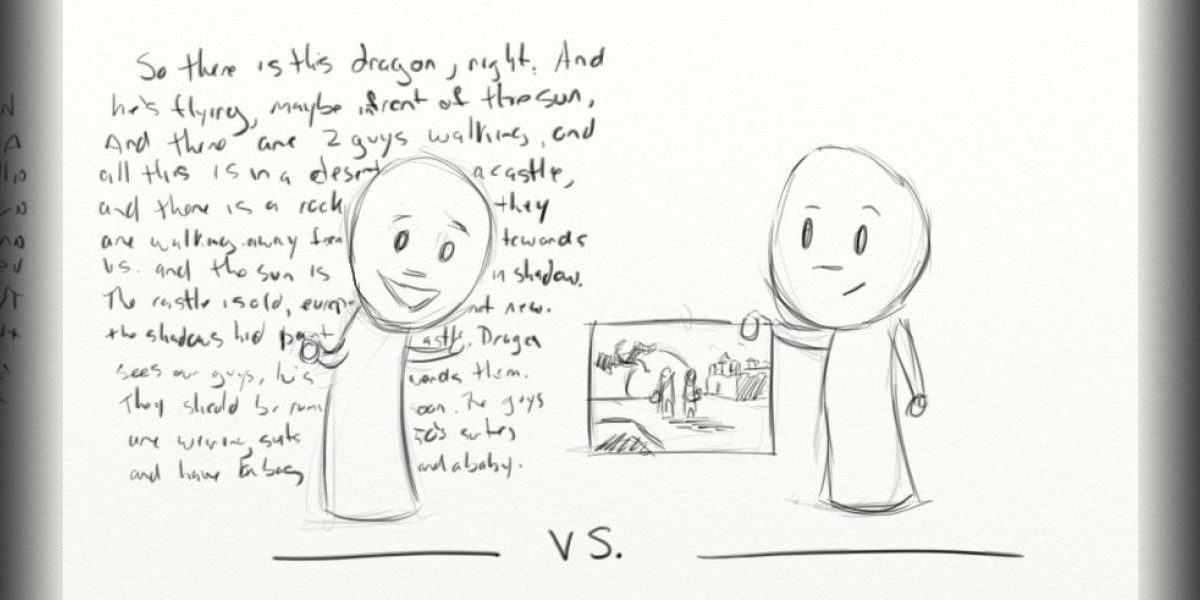The Five Things You Need to Know About Storyboards
 Richard "RB" Botto
Richard "RB" Botto What are storyboards and why would anyone want to use them? Today I welcome storyboard artist and illustrator Debi Hammack to the Stage 32 Blog. Having worked on Fox's Sleepy Hollow and Daryl's Restoration Over-Hall, as well as numerous independent films, television shows and commercials, Debi knows first hand the benefits of working with a storyboard artist.
If you're a creative considering working with a storyboard artist or illustrator as a method to flesh out your story or design your shot list, Debi shares with you what skills they should have and how best to collaborate.
I thank Debi for her contribution to the Stage 32 Blog!
Enjoy!
RB
The Five Things You Need to Know About Storyboards
(Plus a journey in learning all of them.)
As a little girl I was always drawn to drawing (pun fully intended) as well as to any type of storytelling. The shows I were obsessed with while growing up always had a strong influence on what I wanted to do as an adult, an important fact I only discovered much later in life. When I was into cop shows, I wanted to be a detective, that was until I learned you had to wear a uniform and follow orders. That was a non-starter for young rebel me who scoffed when a teacher told us to write something down. I know full well what I need to write, thank you very much. Then paranormal shows and sci-fi shows were beamed into my eyeballs and brain, and I wanted to be a ufologist. Yes, it's a thing. Many books were bought and read about the subject, however soon, my parents pointed out to me that making a living in this “career” was really, really unlikely. It took me a while to join them in that fact. To twist the quote from the poster on my wall: “I did not want to believe.” Then, in my late teens, Seaquest was on the air and of course I was now riveted by marine biology. Like drawing, the ocean and science had also been constant loves growing up so this career path seemed like a good, logical fit...for once. While I did still love drawing, at that point I had crazy low self esteem and just showing my drawings to anyone was a monumental task. Art would just my hobby, marine biology, I decided, would be my career.
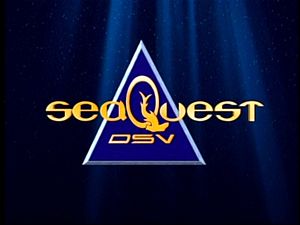
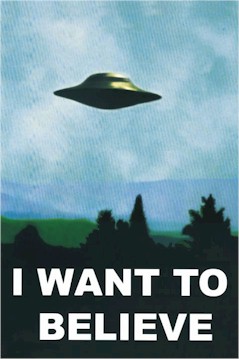
Cut to a montage of me, college years, studying hard for a B.S with honors in marine biology. The start of senior year found me working on my honors project which was to conduct my own scientific experiment. My topic: The sexual preference of eastern mosquito fish. Again, yes, it's a thing. I loved designing the research and conducting the experiments, which in this case was counting how many gonadal thrusts the male made towards different sized females. Really. I swear. However, there was a scientific paper to write and a lecture to give, both of which I hated and both of which I learned would be 80% of my future if I followed this career path. The parts I loved would only be a small portion of how I would spend my life. As I was writing the very dry, factual research paper, a paragraph about the sizes of the male fishes' gonads suddenly turned into a sci-fi story about an alien abduction. I think it was at that moment I knew I had to change my path in life.
After much crying, terror and pure panic, I was reminded of my love for drawing and stories. Maybe it was on one of my regular trips to the comic shop that I thought: “Hey, I'd love to draw these! How hard could it be?” And right there, my naive, stubborn self was off onto another career path, only now I was joined with a pretty B.S. diploma and, at that time, a decent sized college loan debt.
Shortly after graduation, my single mom, who had been battling cancer since I was 16, relapsed again and needed some support; I needed a place to stay while I paid off my loans and worked on my art. The answer seemed obvious and I moved back home. Cut to another montage of working part time retail jobs and going straight home to teach myself everything about illustration and sequential art. I did this seven days a week for 5 years, any social life and spending of the money was almost non-existent. My “senior project” this time was to self-publish my own four issue comic series, which took another year to complete. Is it a surprise that it was about aliens? Take that failed ufology career! The comic got some good reviews, but to say that I was not good at the whole marketing part would be a vast understatement. (Tech note: this was pre-social media, the internet was but a wee-child.) I ended up not even making back the money I spent on publishing. Six years into this dream career and all I had to show for it was a failed comic series, a few volunteered penciling gigs for some small indie comics (most of which never saw the light of day), and a large, growing collection of rejection letters from comic companies. I was at a loss. Another dream was crashing and burning. I needed to make money at my art asap and comics were just not looking likely. Then I got an email from a filmmaker saying he saw my website for my comic and he'd like me to do a storyboard for his short film. A new dream was born.
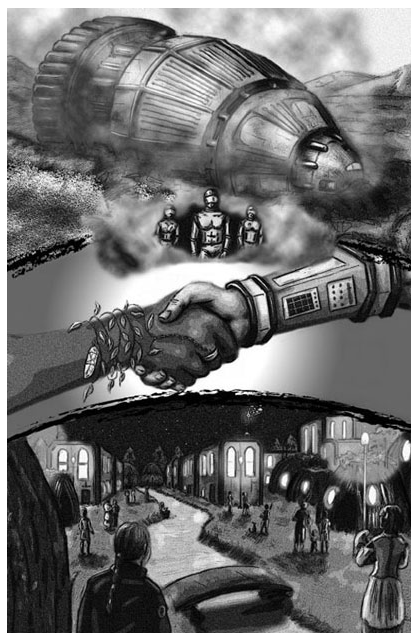
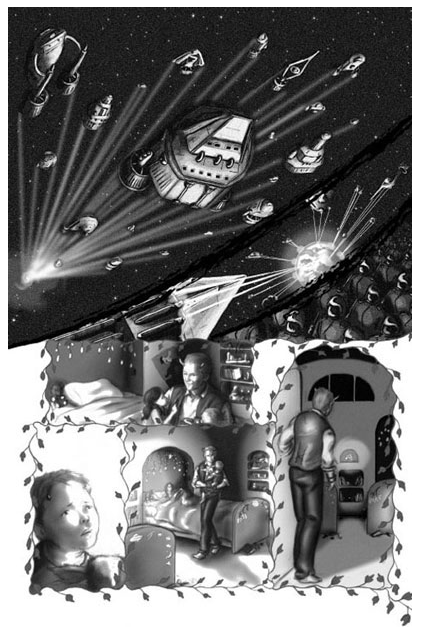
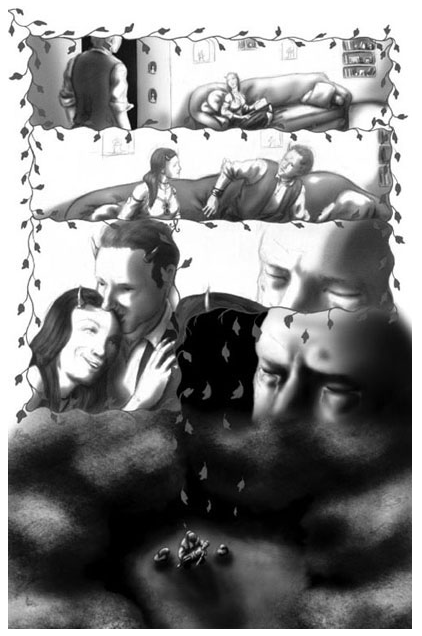
A'pertua Comic Sample
It still took another six years of part time retail work and struggle in building my storyboard career to finally be able to support myself solely as a freelance artist. Most of my work was in commercials and indie films, as well as a ton of small, random illustration gigs. Then two years later, after my mom/best friend/hero lost her long-fought battle with cancer and I relocated to a film-friendly town, did life find me working on not one, but two TV shows (Sleepy Hollow and the lesser known Daryl's Restoration Over Hall). To my amazement, this dream career path really was alive and kicking (though I'd be lying to you if I didn't say I still want to be a ufologist. I wonder if S.E.T.I needs storyboards?). While work on those two shows have ended, I'm still having a blast working on storyboards on a variety of commercials, indie films, and even virtual reality programs.
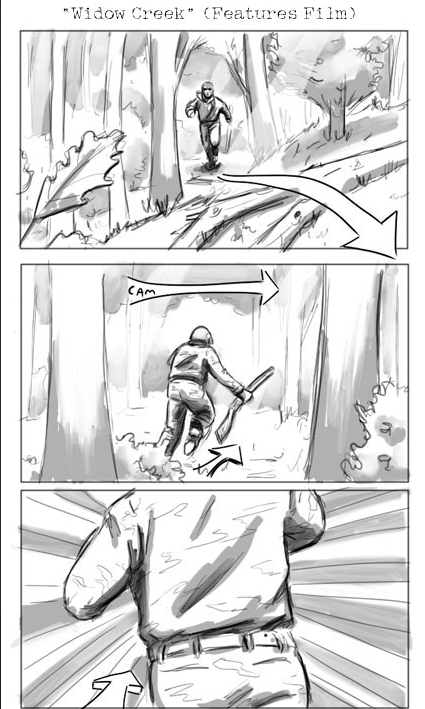

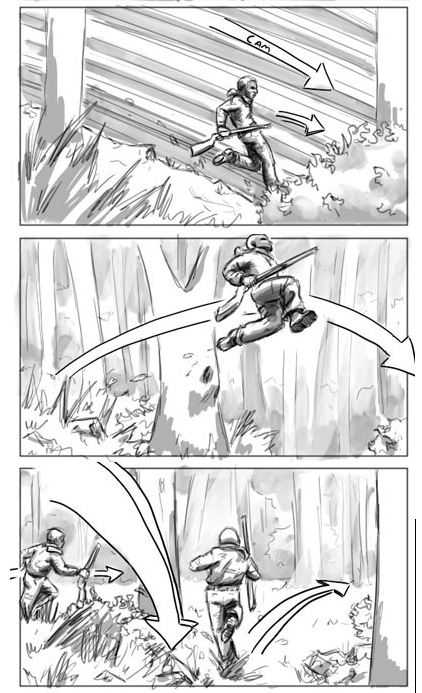
Widow Creek feature film
The one thing I haven't mentioned are the thousands upon thousands of times I wanted to quit, and the constant fear that this would never work out. I think it was the simple, utter distaste of a traditional 9-5 life and having no backup plan that kept me moving forward. I had lost so many dream careers that this was going to be my last attempt. This would be the survivor. Moral of the journey so far, to quote Galaxy Quest, “Never give up, never surrender!”
Now, in all those years of learning and working, I've picked up a few nuggets of information about what us elusive storyboard artists do and how we can be helpful to filmmakers. So, onto the list!
The Five things You need to know about Storyboards
1) What the heck are storyboards?
Storyboards are basically a first draft of the visual aspect of the film. Think of them as a rough blueprint for the final product. They are not meant to be a perfect copy of the visuals to come, but rather a way to work out what the director wants and what will work. Storyboards are used in all sorts of visual mediums, from films and tv shows, to animation and commercials, as well as games and, now, even virtual reality programs.
2) Why would anyone want to use them?
Many reasons!
- They can save money by allowing the director be more prepared for the shoot. It's a lot cheaper to hire an artist to draw everything during pre-production than to figure it out while the whole cast and crew sit waiting on set and on the clock. Storyboards can also uncover problems that might arise on set ahead of time.
- To better communicate your ideas....there had to be a better way to say that. Hmmm, maybe a drawing of it would help!
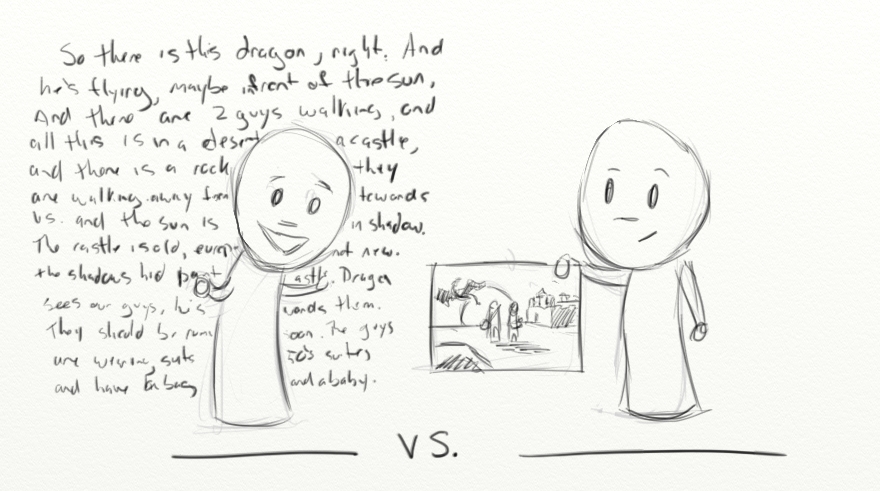
After all, a picture is worth a thousands words. This can help to get all the various crew from all the various departments on the same page with the least amount of frustration and time.
- They can act as a tool in marketing your ideas to investors. Drawings are a great, fast and cost effective way to get your idea across to people who might want to fund your project. One note, these types of storyboards need to be cleaner and prettier than the ones needed in the previous examples. The film should come alive in these types of boards. The cousin of the storyboard, the comic book, is also a tool that is being used to pitch films to investors or sell scripts.
3) What are the benefits of working with a storyboard artist?
While drawing your own boards are always an option, there are some benefits to hiring a storyboard artist. For those who are drawing-challenged, a professional artist will deliver clearer, more legible images to use in communicating your ideas. Even if you feel comfortable drawing, hiring an artist can offer a different perspective on some of the visual aspects of a project (in other words, creative collaboration), and free up your time to focus on other efforts.
4) What skills should a storyboard artist have?
- Draftsmanship is of course on the top of the list. The artist should be able to draw objects that look like the objects they are suppose to be. Looking at the storyboards shouldn't be like looking at a 5 year old's drawing and trying to figure out if that blob is a person or a dinosaur eating a house.
- The ability to draw everything! The artist needs to be able to draw almost anything from any perspective with very few photo references. There is often just not time to dig up a ton of photos for that ox, tank and shipping port crane that are in the chase scene that they need by tomorrow! Which brings me to another skill:
- Speed. Storyboard artists' deadlines are often insane. I can't tell you how many calls for commercial storyboards I get at 5pm asking for the boards by the next morning. The average number of frames I usually hear that an artist should be able to do in a day is 15-20 clean grayscale frames. However, one project had me doing 130 rough frames in a day! I have heard similarly high numbers from fellow storyboard artists as well. If you ask this of us, please have ice on standby for our hand!
- Cinematography skills. Storyboard artists should know all the common camera moves, how and when to use them, composition, pacing, and even camera lenses. They should be masters in visual storytelling.
- Communication skills are needed in not only being able to interpret the director's excited ramblings about the shots s/he want into understandable finished drawings, but also in making sure that you are both on the same page idea and deadline wise.
5) How does one work with a storyboard artist?
First, bribe us with a lot of munchies to keep us fueled through long nights of drawing. Personally, I go for the black licorice gummy bears. Mmmmm. In looking for an artist, you might look locally but also keep in mind that, thanks to the wonder of the internet, you can now easily work remotely with any storyboard artist. Email, phone and Skype are great tools when your artist is not near you. Scripts, photos of sets, cast and props can be emailed; shots can be discussed over the phone; and since the majority of storyboards are done on computers nowadays, files can easily be shared over the net. Most of my gigs are done this way.
One side note that will probably save your artist's sanity is in knowing that we cannot estimate how many frames will be needed per script page count. If a page is all dialog, it could just need 5 frames, if there is the line “they fight”, it could need 100 frames.
The rest of the process varies from director to director and artist to artist. Some directors like to be fully hands on with detailed shot lists and even rough drawings, while others like to just hand over the script and see what the artist comes up with. Artists also have varying processes, so it's best to talk over with your artist to see what will work best for both of you. My process starts with talking with the director and finding out where on the “hands-on” spectrum they lie. I get whatever information they have and start to draw up rough thumbnails. The thumbnails just focus on composition, staging, and the big picture. Most often the people are faceless and are just labeled in order to tell them apart. The purpose here is to see if the visuals match up with what's in the director's mind and if they work. It's easier to make changes when the images are rough rather than after spending hours making them all pretty only to find out they were wrong and you have to erase them all...while crying, or cursing, or both. Once I get feedback on the thumbnails and the images are agreed on, I enlarge the drawings and clean them up. People get faces and clothing (yes, they have been nudist up to this point) and backgrounds get more detail. After that, only minor changes should be needed and the storyboard part of the film is done. Huzzah!
Like this blog post? Please share it on social media (Facebook, Twitter, LinkedIn, email etc) by using social media buttons at the top of the blog. Or post to your personal blog and anywhere else you feel appropriate. Thank you.
As always, Debi is available for remarks or questions in the Comments section below...
| 4 Year Anniversary Month - Photos, Videos and Stage 32 Gear! |
| MovieMaker Magazine’s Indie-Friendly Business List for 2015 |
Search Stage 32 Blog
There are now 3606 blog posts for you to enjoy. Search them all by tags below.
Acting, Advice, Cinematography, Coffee & Content, Composing, Contests, Distribution, Featured, Filmmaking, Financing, Inspirational, Networking, Producing, Screenwriting, Success Stories, Tips, Trending,Relevant Tags
Recommended Articles
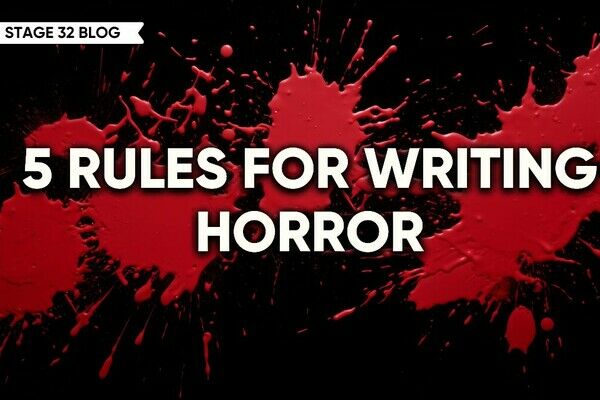
5 Rules For Writing Horror

Celebrate the September 2024 Stage 32 Community’s Successes!

Stage 32's October 2024 Education Schedule!
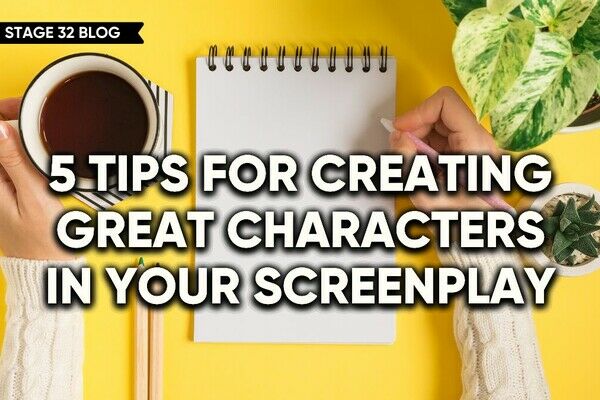
5 Tips For Creating Great Characters In Your Screenplay
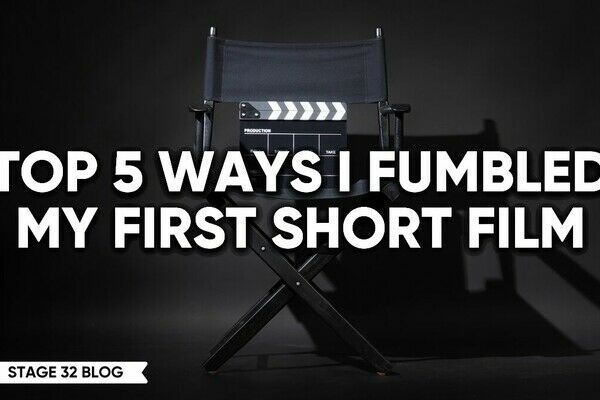
Top 5 Ways I Fumbled My First Short Film

How to Make The Director & Film Composer Collaboration Sing

Can Someone Tell Me What Producers Even Do?

Coffee & Content: The Secret To Opportunity Is Building Relationships

3 [Frightening] Writing Fails to Avoid in a Horror Script




